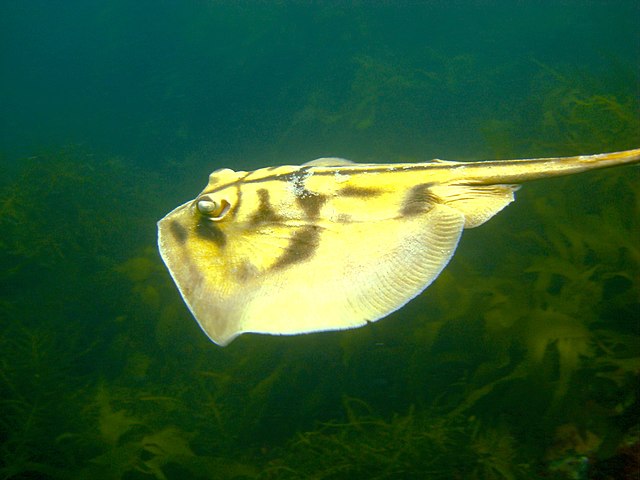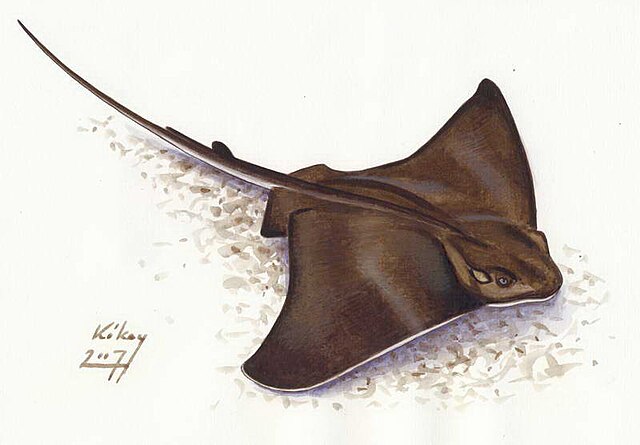The Urolophidae are a family of rays in the order Myliobatiformes, commonly known as stingarees or round stingrays. This family formerly included the genera Urobatis and Urotrygon of the Americas, which are presently recognized as forming their own family Urotrygonidae. Stingarees are found in the Indo-Pacific region, with the greatest diversity off Australia. They are sluggish, bottom-dwelling fish that have been recorded from shallow waters close to shore to deep waters over the upper continental slope. Measuring between 15 and 80 cm long, these rays have oval to diamond-shaped pectoral fin discs and relatively short tails that terminate in leaf-shaped caudal fins, and may also have small dorsal fins and lateral skin folds. Most are smooth-skinned, and some have ornate dorsal color patterns.
Urolophidae
The Kapala stingaree (U. kapalensis), one of several newly described urolophids
The striped stingaree (T. ovalis) prefers rocky or seagrass habitats.
The eastern shovelnose stingaree (T. imitata), which has a rounded disc and no dorsal fin or lateral skin folds on its tail.
Batoidea is a superorder of cartilaginous fishes, commonly known as rays. They and their close relatives, the sharks, comprise the subclass Elasmobranchii. Rays are the largest group of cartilaginous fishes, with well over 600 species in 26 families. Rays are distinguished by their flattened bodies, enlarged pectoral fins that are fused to the head, and gill slits that are placed on their ventral surfaces.
Batoidea
Spotted eagle ray, Aetobatus narinari
Early Eocene fossil stingray Heliobatis radians
Image: Myliobatis aquila sasrája








